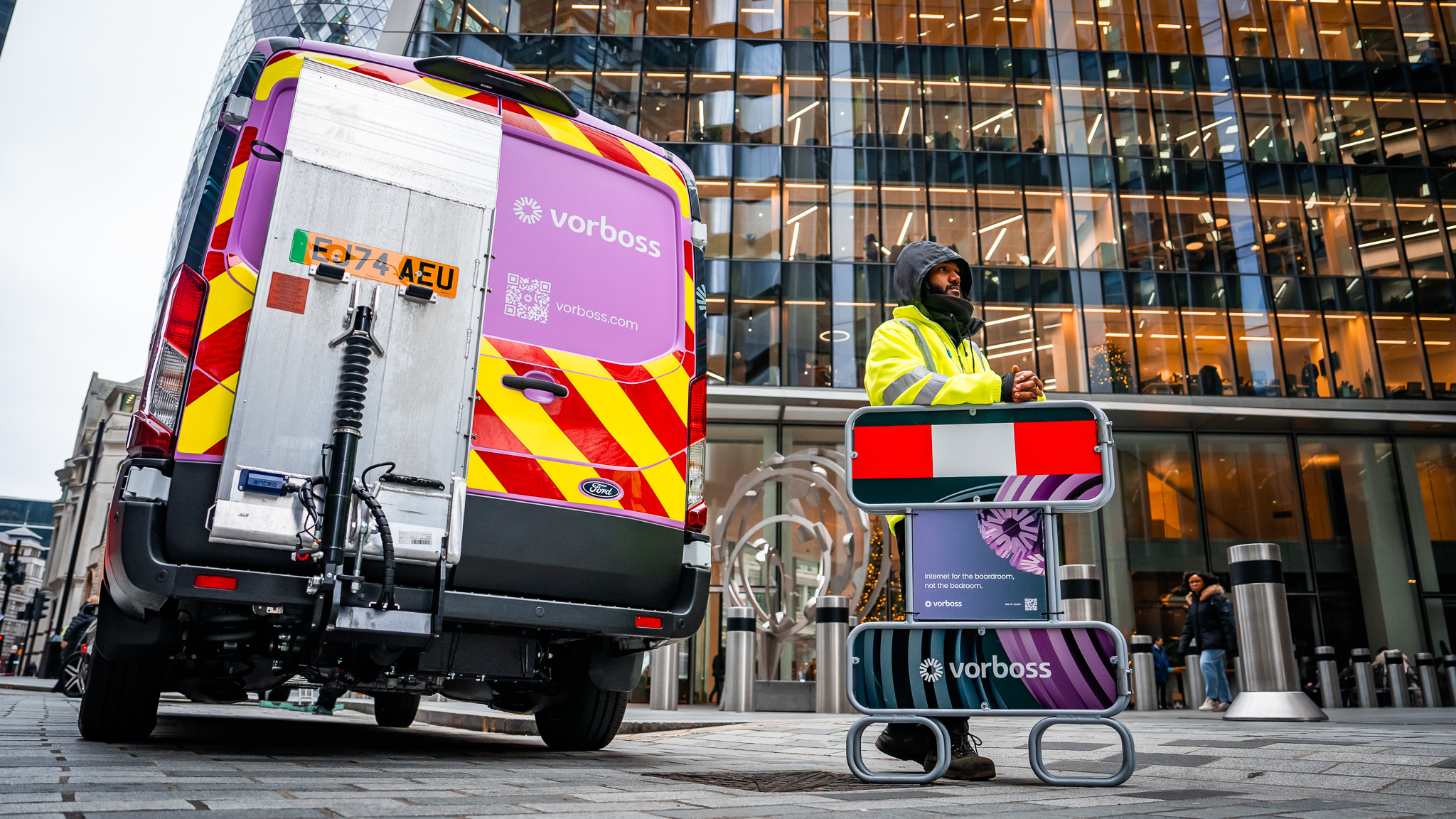Women in Telecoms: challenges, progress, and what’s next
July 3, 2025
|
5
min read

Highlights
From workwear designed exclusively for men to exclusionary job descriptions, the telecoms industry hasn’t always considered women. But that’s changing - and it’s being driven by honest conversations, inclusive leadership, and men and women pushing for better.
At May's biquarterly Women in Telecoms meetup, hosted at Vorboss HQ, women from across the industry came together to share experiences, reflect on progress, and explore what real inclusion looks like.

The session, led by Natalie Strange, MD of RPS Telecoms and Head of the Women in Telecoms group, included a panel discussion with our colleagues at Vorboss about their experiences in the industry, the steps we’re taking to make telecoms more inclusive, and what's next.
Here’s how the discussion went

Meet the panel
Jade, Team Lead Engineer
Joined Vorboss at 18 as an apprentice. Now leads on-site fibre installation teams across London.
Tamryn, People & Culture Manager
Originally joined as a Training Administrator. Now helps embed inclusive policies and support systems across the organisation.
Taylor, Head of Operations
Leads the teams that connect customers and deliver our service end-to-end.
Q: What has your journey been like as a woman in telecoms?
Jade shared her positive experience:
“It’s been amazing. I knew I didn’t want to go down the university route; I wanted to get stuck in and work. Vorboss trained me from the beginning, and now I lead my own team. I genuinely love what I do.”
Tamryn, who recently came back from maternity leave, shared:
“Coming back was a big worry for me – would I still fit in? Would I be supported? The answer’s been yes. We have a parent room, a fridge for milk, and my son’s even visited the office. My son’s even visited the office!”
Q: What hiring barriers still exist in telecoms, and how are we addressing them?
Tamryn:
“For engineering roles especially, we had to rethink the language we used. The old versions were unintentionally harsh and often male-coded. Once we made them clearer and more neutral, more women applied”
Some practical changes discussed included:
- Remove industry jargon from job descriptions
- Manually review CVs instead of relying on (often biased) AI-driven filtering
- Eliminate unnecessary degree requirements
- Run diverse interview panels

Q: How can companies like Vorboss foster more inclusive environments that attract, support, and retain women – from technical roles to leadership positions?
Tamryn:
“We’ve made training fully in-house through the Vorboss Academy, so no previous experience is required. That’s opened doors to people who wouldn’t normally apply. We’ve also built internal career tracks, flexible policies, and training for inclusive management.”
Vorboss has launched these initiatives to retain talent and progress women into leadership roles:
- Internal secondments: opportunities to explore other career options internally.
- Training: manager training on inclusive team management plus annual DE&I and menopause awareness training for all staff.
- Flexibility: accommodating workforce needs, e.g. part-time contracts.
- Internal promotion: fostering internal growth means more women in senior roles, helping us retain talent.
- Listening and acting on feedback: from uniform design to policy, we want to ensure everyone feels seen.
Other policies include paid period days, free sanitary products, IVF and adoption leave, domestic abuse support, free breakfast and welfare vans.
Jade completed a secondment with our data centre team. Though she stayed in her role, she found the experience valuable:
“It was such a good learning experience. It gave me more context and helped me feel more confident in my role.”
Q: What barriers have you encountered (or seen others face), and what helped you or your teams overcome them?
Tamryn:
“Workwear. It seems small, but early on we realised all the uniforms were made for men; gloves, trousers, fireproof kit. We redesigned it all. It took time, but it meant that everyone could work more effectively.”
Q: What advice would you give to the next generation of women pursuing careers in telecoms?
Taylor had clear advice:
“Don’t assume the person you’re talking to knows more than you. Say yes to opportunities. If you fail, that’s fine. Ask for help and keep moving.”
Jade:
“Do it! It’s been life changing for me. I’m so grateful I took the chance.”

Q: What’s next for Vorboss?
We want to keep growing - not just in size, but in diversity, inclusion, and opportunity, and inspire others to follow suit.
We’ve set measurable goals for diversity and inclusion, including:
- Today: more than 1 in 3 of our technical and engineering roles are held by women.
- By 2027: we aim for 50/50 gender parity in technical and engineering roles.
- By 2028: we aim for gender parity company-wide.
We’ve signed Ofcom’s Women in Tech pledge and publish our gender pay gap report annually.
About Women in Telecoms
Women in Telecoms is an initiative by Comms Council UK, created in response to growing demand from its members for regular opportunities to network, share experiences, discuss key industry topics, and exchange ideas.
Tell us about yourself so we can serve you best.
Got a question?
More articles

For many landlords and building managers, the word “wayleave” feels like the responsible route whenever a fibre circuit is being installed on their property. It sounds formal and safe – a neat legal box to tick.
In many cases, however, a wayleave adds unnecessary complexity and delays, frustrates tenants, and can expose landlords to long-term legal risks.
At Vorboss, we’ve connected thousands of office spaces across London without a wayleave, keeping landlords in full control and getting tenants online faster.

What is a wayleave?
A wayleave is a written agreement between a landowner and a telecoms operator. It gives the operator permission to install and keep equipment on private property.
What many people don’t realise is that signing a wayleave also activates “Code rights” under the Electronic Communications Code. These rights go beyond simple permission, they give the operator legal powers to stay on the property indefinitely, access it when needed, and even refuse removal of their equipment in certain situations.
For a typical connection into a commercial building in London, a wayleave can make the fibre installation process slower, more expensive, and limit the landlord’s flexibility long term.
Why a wayleave isn’t required for standard in-building fibre connections
For a standard in-building fibre connection serving a tenant, a wayleave isn’t a legal requirement. Important protections, like building access, fire safety, repairing any damage, and removing equipment, are already covered by the tenant’s lease and usual building rules.
If no wayleave is signed, no Code rights are triggered, meaning the landlord retains full control and the installation exists under a simple, fully revocable licence.
In practice, this gives landlords far more protection and flexibility:
- No legal lock-in – the telecoms operator has no long-term rights to stay or refuse removal.
- Landlords keep full control – equipment can be moved or removed when the building changes.
- Faster fibre installation – no time lost in drafting contracts or solicitor reviews.
- Happier tenants – connections go live quicker; tenants get to move in faster.
By contrast, signing a wayleave and granting Code rights introduces a complex and expensive legal process for any fibre removal or relocation. This can take at least 18 months, plus potential court or tribunal proceedings, making it slower, and far less flexible for the landlord.

Public services across central London are evolving, and the City of London Corporation is leading the way.
Whether you work, live or study in the Square Mile, you’ll soon feel the difference that faster, more dependable connectivity brings.

What is the Future Network Programme?
The City of London Corporation is rolling out the Future Network Programme, a major project to modernise its entire digital infrastructure and bring everything under one unified network.
From offices and schools to iconic green spaces like Hampstead Heath, cultural destinations like the Barbican, and historic markets such as Leadenhall and Old Spitalfields, this upgrade will mean more reliable connectivity across the City’s buildings and public spaces.
It also extends to essential services, including critical sites run by the City of London Police. This enhanced connectivity will support everything from secure communication systems to faster, more resilient networks for emergency operations.
Leading this transformation is Roc Technologies, supported by Juniper Networks and Palo Alto Networks; all powered by the Vorboss fibre network. Together, we’re bringing the City onto a modern digital foundation that’s ready to support its future.
Who the Future Network Programme benefits and how?
The programme is designed for everyone who depends on public services in the Square Mile:
- Students in City-run schools will have fast, reliable connectivity to fully access digital learning tools.
- Public-sector teams will experience smoother hybrid working, better access to online platforms, and more efficient collaboration across locations.
- Residents and visitors will see improvements in public Wi-Fi, digital services, and online access in libraries, community hubs, and other shared spaces.
- The City of London Police will gain a more secure, faster and resilient network that enhances CCTV reliability and enables more effective frontline operations.

.avif)

.avif)

